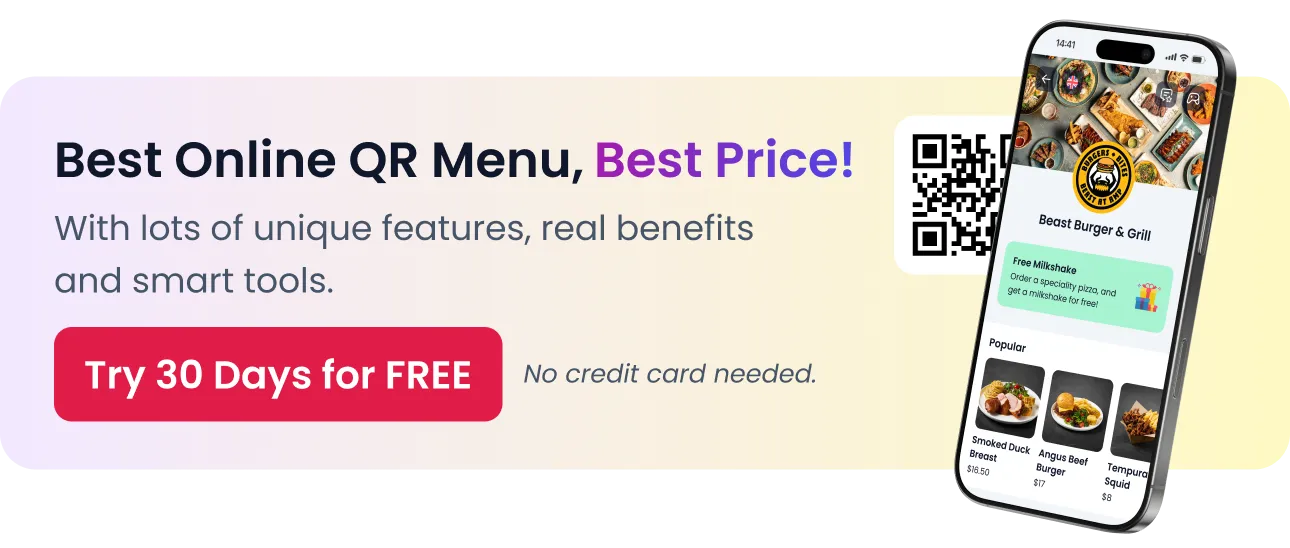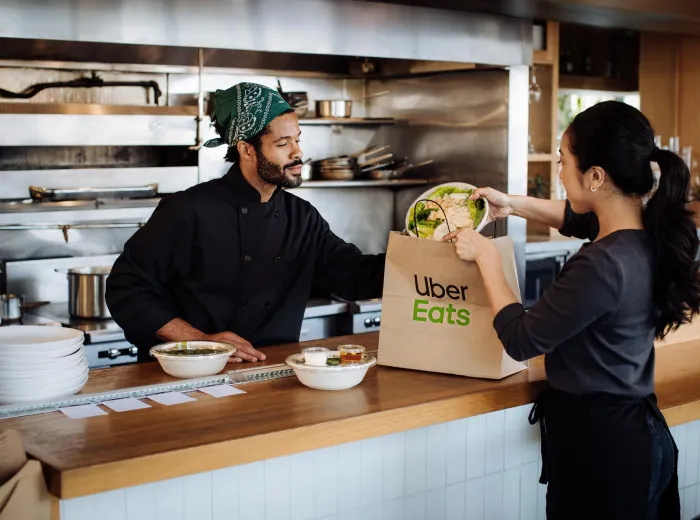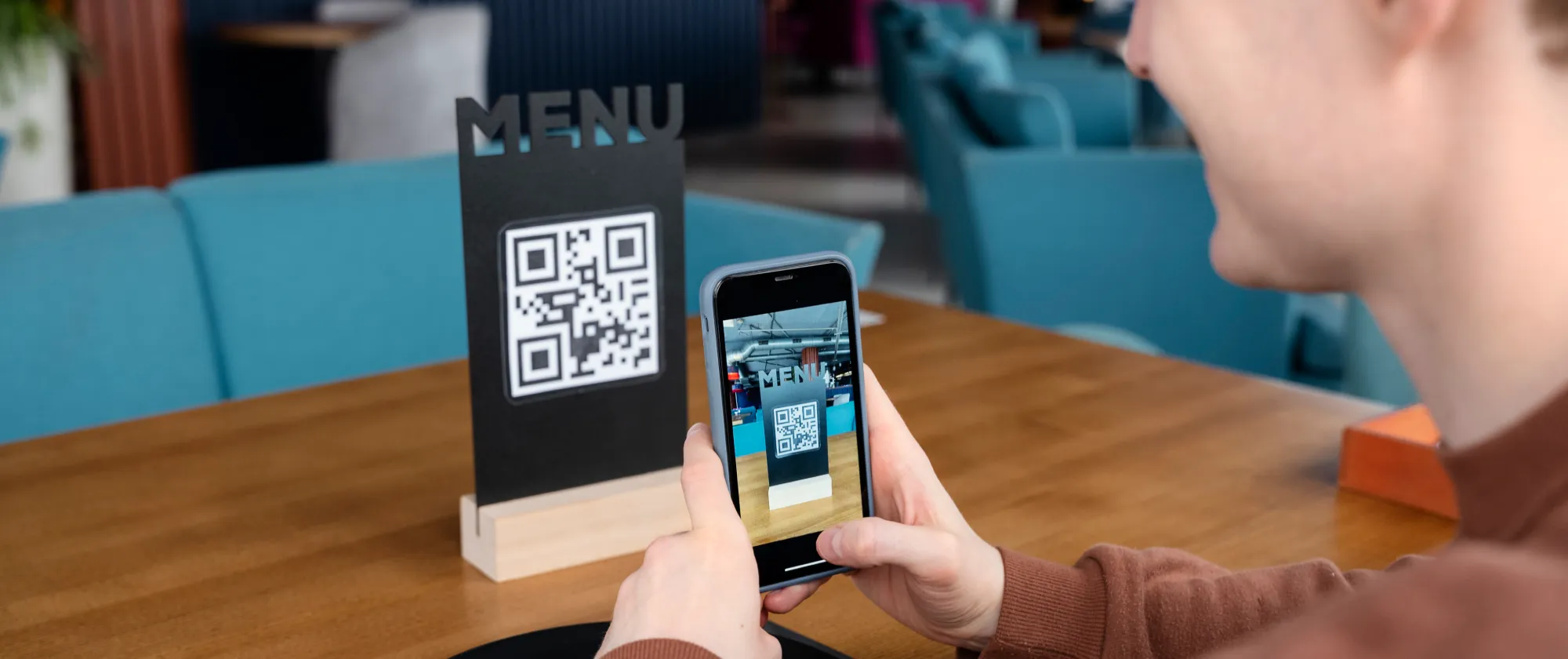
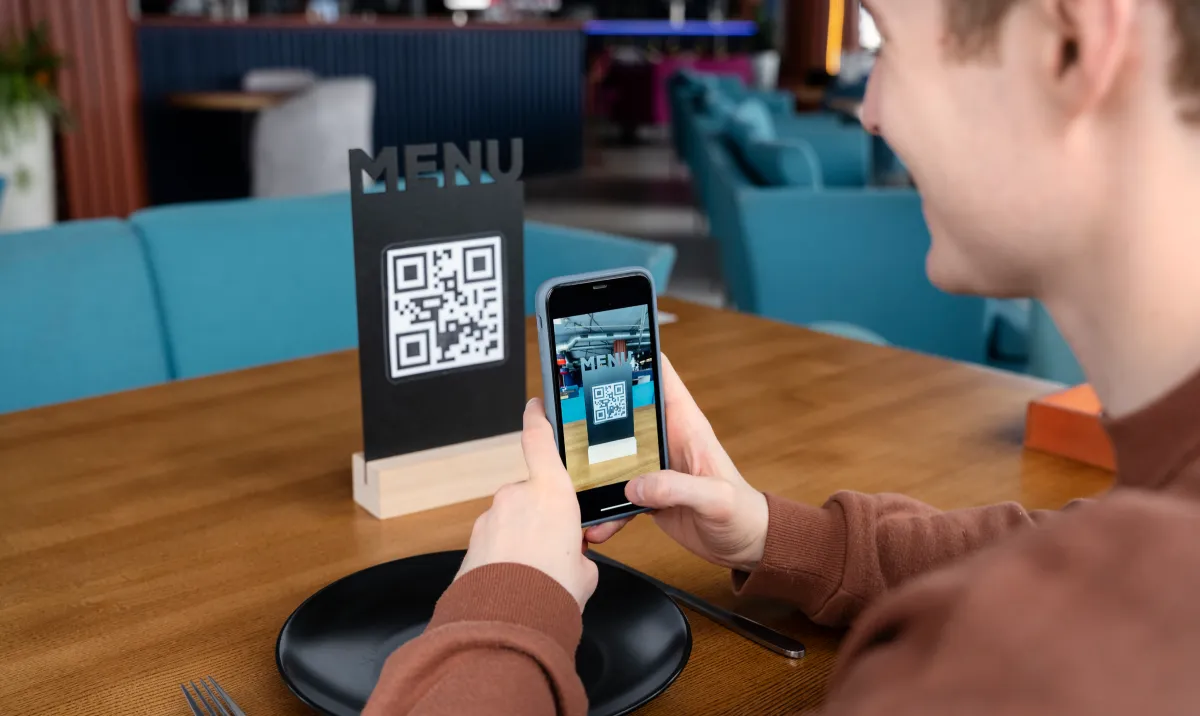
QR Menus vs. PDFs: Which Is Best for Restaurants?
In today’s digital-first world, restaurants are increasingly shifting away from traditional printed menus to digital alternatives. Two of the most common options are QR menus and PDF menus, both of which allow customers to access menus on their smartphones. While QR menus offer an interactive and dynamic experience, PDF menus provide a simple and familiar digital format. But which one is the better choice for your restaurant?
The right menu format can significantly impact customer experience, operational efficiency, and even your bottom line. A well-implemented digital menu can:
- Reduce printing costs and waste
- Improve hygiene with contactless ordering
- Enable real-time updates for menu changes
- Enhance marketing efforts through digital engagement
However, each option has its advantages and limitations, depending on factors such as your restaurant’s style, customer demographics, and technological readiness. In this guide, we’ll break down the differences, pros, and cons of QR and PDF menus to help you decide which format best suits your restaurant’s needs.
Understanding QR Menus and PDF Menus
Restaurants have more digital menu options than ever before, but not all formats offer the same benefits. Two of the most widely used choices are QR menus and PDF menus, each with distinct characteristics. QR menus leverage modern technology for interactive and real-time menu updates, while PDF menus offer a more static and printable format that some customers still prefer.
Understanding the differences between these formats is essential before deciding which one is best for your restaurant. Let’s explore what each menu type is, how they work, and their typical use cases.
What Is a QR Menu?
A QR menu is a digitally accessible menu that customers can view by scanning a Quick Response (QR) code with their smartphone camera. This type of menu is hosted online and dynamically updated in real-time.
How QR Menus Work:
- A QR code is generated and placed on tables, walls, receipts, or digital screens.
- Customers scan the QR code using their smartphone camera or a QR scanner app.
- A digital menu loads instantly, often on the restaurant’s website or a dedicated menu platform.
Common Use Cases for QR Menus:
- Fast-casual restaurants & cafes: Speed up service and reduce printing costs.
- Fine dining establishments: Provide an enhanced digital experience with wine pairings, chef recommendations, and high-quality imagery.
- Bars & pubs: Easily update cocktail lists and drink specials in real time.
- Hotels & resorts: Allow guests to view room service menus without printed booklets.
QR menus have gained popularity for their ability to provide a seamless, interactive, and eco-friendly dining experience. They also enable restaurants to track customer behavior and optimize menu offerings.
What Is a PDF Menu?
A PDF menu is a digitally formatted menu that is uploaded as a Portable Document Format (PDF) file. Customers access it by clicking a link on the restaurant’s website, social media, or scanning a QR code that directs them to the PDF file.
How PDF Menus Work:
- A menu is designed using software like Adobe Acrobat, Canva, or Microsoft Word.
- The PDF file is uploaded to a website or cloud storage service (Google Drive, Dropbox, or a restaurant’s hosting platform).
- Customers open the file via a shared link or QR code and view the menu on their device.
Common Use Cases for PDF Menus:
- Fine dining and traditional restaurants: Maintain a printed-menu experience while offering a digital backup.
- Takeout and delivery services: Provide an easily downloadable and printable menu for customers.
- Catering businesses: Share fixed menu packages in a professional, document-style format.
- Restaurants with minimal digital integration: Ideal for businesses that want a simple online presence without interactive elements.
While PDF menus are easy to create and share, they are often limited in functionality, making updates cumbersome and reducing engagement compared to QR-based interactive menus.
QR Menus vs. PDFs: Key Differences
When choosing between a QR menu and a PDF menu, understanding the key differences is crucial. Each format impacts customer experience, operational efficiency, and digital marketing potential in different ways. Below, we break down their distinctions across several essential factors.
Accessibility and User Experience
QR Menus:
✅ Instant access with a quick smartphone scan
✅ Mobile-friendly and responsive design
✅ Supports interactive elements (buttons, filters, search function)
⚠️ Requires a smartphone with an internet connection
⚠️ Some customers may be unfamiliar with QR scanning
PDF Menus:
✅ Easy to open from a website or social media link
✅ Works offline once downloaded
✅ Maintains a familiar traditional menu layout
⚠️ Not optimized for mobile screens (zooming and scrolling needed)
⚠️ No interactive features for easy navigation
Takeaway: QR menus offer a more user-friendly and interactive experience, whereas PDFs may feel outdated and difficult to navigate on mobile devices.
Design and Customization Options
QR Menus:
✅ Fully customizable digital layouts
✅ Can include high-quality images, videos, and animations
✅ Supports real-time updates without re-uploading
✅ Allows personalized promotions and cross-selling
⚠️ Requires a restaurant website or menu platform for hosting
PDF Menus:
✅ Simple and easy to create using design tools
✅ Maintains the branding and layout of a traditional menu
✅ Can be printed and used offline
⚠️ Changes require manual updates and re-uploading
⚠️ Limited design flexibility, no interactive features
Takeaway: QR menus offer more customization and interactivity, making them ideal for restaurants that frequently update their offerings or want to enhance engagement.
Cost and Maintenance
QR Menus:
✅ No printing costs—100% digital
✅ Easy and free to update anytime
✅ Saves time for staff by automating menu updates
⚠️ Initial setup may require a digital menu platform subscription
PDF Menus:
✅ Low-cost option (can be created for free)
✅ No special software or hosting required
⚠️ Frequent updates require re-editing and re-uploading
⚠️ Printing costs if used alongside physical menus
Takeaway: QR menus save money in the long run, especially for restaurants that frequently change their menu items. PDFs are budget-friendly upfront but can become costly if frequent updates are needed.
Integration with Restaurant Technology
QR Menus:
✅ Can link to POS systems for seamless ordering
✅ Supports online ordering and payment integrations
✅ Enables customer behavior tracking through analytics
✅ Can integrate with loyalty programs and promotions
PDF Menus:
✅ Can be linked to a website for basic access
⚠️ No direct POS system integration
⚠️ No analytics tracking
⚠️ No direct ordering or payment functionality
Takeaway: QR menus integrate with modern restaurant technologies, providing valuable customer insights and automation, whereas PDFs are static and lack interactive capabilities.
Final Thoughts on Key Differences
QR menus and PDF menus serve different purposes. QR menus are interactive, cost-efficient, and tech-friendly, making them ideal for most modern restaurants. PDF menus are simple but lack flexibility and interactivity, making them better suited for restaurants that prefer a more traditional approach. Choosing the right option depends on your restaurant’s digital strategy and customer preferences.
Pros and Cons of QR Menus
QR menus have gained immense popularity in the restaurant industry, offering a contactless, cost-effective, and interactive way to present menus. However, they also come with some drawbacks that restaurant owners should consider. Below, we break down the advantages and disadvantages of using QR menus.
Advantages of QR Menus
✅ Instant Updates Without Reprinting
- Modify menu items, prices, and availability in real time.
- Quickly update daily specials or seasonal menus.
- Avoid costly and time-consuming reprints of physical menus.
✅ Cost-Effective and Eco-Friendly
- Eliminates printing costs for paper menus.
- Reduces paper waste, making it a sustainable option.
- Saves money in the long run by minimizing menu replacement costs.
✅ Interactive and Engaging Experience
- Can include high-quality images, videos, and descriptions.
- Allows customers to filter by dietary preferences (vegan, gluten-free, etc.).
- Supports upselling strategies by displaying related menu items or promotions.
✅ Faster Ordering and Improved Efficiency
- Customers can browse the menu while waiting to be seated.
- Integration with POS systems allows for digital ordering and payments.
- Reduces the workload for servers, allowing them to focus on customer service.
✅ Enhanced Hygiene and Safety
- Contactless access minimizes the spread of germs, making it a sanitary option.
- Customers don’t need to share physical menus, improving their comfort and safety.
✅ Marketing and Data Insights
- Collects customer behavior data (popular items, time spent browsing).
- Helps optimize menu design and pricing strategies.
- Can integrate with loyalty programs and special promotions.
Disadvantages of QR Menus
⚠️ Requires Customers to Have Smartphones
- Not all customers may have a smartphone or be comfortable scanning QR codes.
- Restaurants catering to older demographics may face resistance.
⚠️ Internet Connectivity Issues
- QR menus require an internet connection, which can be problematic in areas with weak Wi-Fi or mobile data.
- Some customers may struggle to load the menu if the restaurant’s network is slow.
⚠️ Potential Technical Challenges
- QR codes must be properly placed and easily scannable.
- Poor menu hosting platforms can lead to slow-loading pages or broken links.
- Requires regular maintenance to ensure the digital menu remains accessible.
⚠️ Less Personalized Experience
- Some customers prefer printed menus for a traditional dining experience.
- Restaurants that focus on premium or fine dining may find QR menus too informal.
Final Thoughts on QR Menus
QR menus provide a modern, efficient, and cost-saving solution for restaurants, enhancing customer engagement and streamlining operations. However, technical limitations and customer resistance should be carefully considered. Restaurants targeting tech-savvy customers or looking to reduce costs and improve efficiency will benefit the most from this menu format.
Pros and Cons of PDF Menus
PDF menus have long been a popular digital option for restaurants that want to provide an easy-to-access menu without needing complex integrations. While they are simple and familiar, they also come with some drawbacks, especially when compared to more interactive digital menus like QR-based options. Below, we explore the pros and cons of using PDF menus in restaurants.
Advantages of PDF Menus
✅ Easy to Create and Implement
- No need for specialized software—can be made with Word, Canva, or Adobe.
- Can be uploaded to a website or shared via a link or QR code.
- Allows restaurants to digitize menus quickly without major setup costs.
✅ Maintains a Traditional Look
- PDF menus mimic the design of printed menus, making them familiar to customers.
- Ideal for fine dining and high-end restaurants that prioritize aesthetics.
- Allows full creative control over fonts, colors, and layouts.
✅ Works Offline Once Downloaded
- Customers can download and access the menu without an internet connection.
- Useful for catering businesses and hotels, where guests may want a copy of the menu in advance.
✅ Compatible with Any Device
- Can be opened on smartphones, tablets, and computers without needing special apps.
- Works across all operating systems (Windows, iOS, Android, Mac).
✅ Can Be Printed Easily
- Serves as a dual-purpose menu—both digital and printable.
- Ideal for restaurants that need both digital and physical menus without separate designs.
Disadvantages of PDF Menus
⚠️ Not Mobile-Friendly
- PDF files are not responsive, meaning they don’t adjust to different screen sizes.
- Customers often have to zoom in and scroll, making them frustrating to navigate on mobile.
- Poor user experience compared to interactive web-based menus.
⚠️ Limited Interactivity
- PDFs cannot include clickable buttons, videos, or real-time updates.
- No ability for customers to filter items (vegan, gluten-free, spicy, etc.).
- Does not support built-in online ordering or payments.
⚠️ Difficult to Update
- Any menu change requires re-editing, saving, and re-uploading the file.
- Frequent updates can become time-consuming, especially for restaurants with seasonal or daily specials.
- If a menu link is widely shared, an outdated PDF might continue circulating.
⚠️ No SEO Benefits for Online Visibility
- Search engines cannot read text within PDFs easily, making them bad for SEO.
- Customers searching for specific menu items online may not find your restaurant’s menu.
- Unlike web-based menus, PDFs do not contribute to local search rankings.
⚠️ Can Be Slow to Load
- Large PDF files with high-quality images may take longer to open on mobile devices.
- Slow-loading menus can lead to frustrated customers abandoning the menu.
Final Thoughts on PDF Menus
PDF menus are simple, traditional, and easy to create, making them a good choice for restaurants that need a quick digital solution. However, they lack interactivity, mobile-friendliness, and real-time updates, making them less effective for modern digital dining experiences. Restaurants with frequent menu changes or those looking to enhance customer engagement should consider more dynamic alternatives like QR menus.
Which Menu Type Is Best for Different Restaurant Types?
Choosing between a QR menu and a PDF menu depends on your restaurant’s concept, service style, and customer expectations. While some restaurants benefit from the modern and interactive nature of QR menus, others may prefer the traditional, printable format of PDFs. Below, we explore which menu type works best for different restaurant types.
Best for Fine Dining Restaurants
✅ Best Option: Hybrid Approach (PDF + QR Menu)
Fine dining restaurants prioritize elegance, presentation, and personalized service, making them less suited for fully digital menus. However, offering a QR menu as an optional add-on can enhance the guest experience.
Why?
- PDF menus maintain the luxury aesthetic of printed menus while allowing digital access.
- QR menus can enhance wine pairing recommendations and showcase chef specials interactively.
- Some guests prefer traditional printed menus for a refined experience.
Suggested Approach:
- Keep printed menus but provide a PDF version on the website for online browsing.
- Use QR menus for detailed wine lists, seasonal specials, or chef’s tasting menus.
Best for Quick Service and Fast Casual Restaurants
✅ Best Option: QR Menus
Fast-paced restaurants rely on efficiency, speed, and digital integration, making QR menus the ideal choice.
Why?
- Customers can scan, browse, and order quickly, reducing wait times.
- Works well with self-order kiosks, online ordering, and POS integration.
- Eliminates the need for physical menus, reducing printing costs.
Suggested Approach:
- Place QR codes on tables, counters, and digital screens.
- Allow customers to place orders directly from the digital menu.
- Use QR menus to highlight combo deals, loyalty rewards, and promotions.
Best for Cafes and Coffee Shops
✅ Best Option: QR Menus
Cafes and coffee shops benefit from dynamic menus that showcase seasonal drinks, limited-time offers, and food pairings.
Why?
- QR menus allow quick menu updates for daily specials.
- Customers can explore detailed descriptions, images, and customization options.
- Reduces the need for physical menus in small café spaces.
Suggested Approach:
- Place QR codes on table tents, counters, and takeaway packaging.
- Use QR menus to showcase coffee blends, brewing methods, and featured items.
- Offer loyalty rewards or discounts through QR menu integrations.
Best for Bars and Pubs
✅ Best Option: QR Menus
Bars and pubs often have rotating drink menus, happy hour specials, and custom cocktail lists, making QR menus the most effective choice.
Why?
- Allows real-time updates for seasonal cocktails and promotions.
- Can integrate with online ordering for bar tabs and table service.
- Enhances engagement by offering descriptions of craft beers, spirits, and mixology details.
Suggested Approach:
- Use QR menus to display drink pairings and signature cocktail recipes.
- Place QR codes on coasters, menus, and bar counters.
- Integrate with mobile payment options for easy checkouts.
Best for Hotels and Resorts
✅ Best Option: QR Menus
Hotels and resorts cater to diverse guests and require seamless access to various dining options. QR menus provide an easy way to showcase room service, restaurant menus, and poolside dining options.
Why?
- Guests can scan a QR code in their room or lobby to access all restaurant menus.
- Allows for language selection to accommodate international guests.
- Simplifies room service ordering by integrating with the hotel’s POS system.
Suggested Approach:
- Place QR codes in hotel rooms, lobbies, poolside areas, and concierge desks.
- Provide guests with multilingual menu options through QR menus.
- Enable direct room service ordering through digital menus.
Best for Catering and Private Dining Businesses
✅ Best Option: PDF Menus
Catering and private dining services often need fixed menus for proposals, events, and client approvals, making PDFs the more practical choice.
Why?
- Clients can download and print the menu for event planning.
- Allows catering businesses to send customized menus via email.
- Works well for corporate events, wedding menus, and large-scale orders.
Suggested Approach:
- Offer downloadable PDF menus with pricing tiers and service options.
- Use PDFs to showcase past event menus and testimonials.
- Provide QR codes leading to PDFs for easy online access.
Final Thoughts on Menu Selection
The best menu type depends on your restaurant’s needs, customer preferences, and operational style.
| Restaurant Type | Best Menu Type |
|---|---|
| Fine Dining | Hybrid (PDF + QR) |
| Quick Service | QR Menu |
| Cafes & Coffee Shops | QR Menu |
| Bars & Pubs | QR Menu |
| Hotels & Resorts | QR Menu |
| Catering & Private Dining | PDF Menu |
For most modern restaurants, QR menus offer greater flexibility, engagement, and cost savings. However, PDF menus still have a place in specific business models, particularly where printed options and formality are essential. Restaurants can also adopt a hybrid approach, using both formats to maximize customer convenience.
How to Implement QR or PDF Menus Effectively
Successfully using QR menus or PDF menus in your restaurant requires proper planning and execution. Whether you choose QR codes for a dynamic experience or PDF menus for simplicity, optimizing them for customer ease and operational efficiency is key. Below, we break down the best practices for implementing both menu types.
Setting Up a QR Menu
1. Choose a Reliable Digital Menu Platform
A QR menu requires a hosting platform to store and display the menu. Options include:
- Restaurant websites (embedded menu pages).
- Digital menu services like Menuviel (recommended for ease of use).
- POS system integrations with QR menu functionality.
💡 Tip: Choose a platform that allows real-time updates without needing to regenerate QR codes.
2. Generate a High-Quality QR Code
Once your menu is uploaded, generate a scannable QR code using:
- Free online QR code generators (QR Code Monkey, QRStuff, Beaconstac).
- Built-in QR generators from menu hosting platforms.
💡 Tip: Ensure the QR code links directly to the menu (not a PDF file, which may be hard to read on mobile).
3. Strategically Place QR Codes in Your Restaurant
To ensure maximum usage, place QR codes:
✅ On tables – printed on coasters, table tents, or laminated cards.
✅ On the counter – for quick-service and takeaway orders.
✅ On receipts – encouraging repeat customers to check the menu.
✅ On social media and websites – easy access before visiting.
💡 Tip: Include simple instructions (e.g., “Scan to view our menu”) for customers unfamiliar with QR codes.
4. Train Your Staff to Guide Customers
- Ensure servers know how to help customers scan QR codes.
- Have printed menus available for guests who prefer them.
- Train staff to highlight digital menu benefits (real-time updates, filtering options, etc.).
💡 Tip: If your QR menu allows ordering or payments, train staff on how to assist customers in completing transactions.
5. Keep the Menu Mobile-Friendly and Engaging
A poorly designed digital menu can frustrate customers. Optimize it by:
✅ Using a simple, mobile-responsive design.
✅ Adding high-quality food images to enhance appeal.
✅ Ensuring fast-loading times (avoid large files).
✅ Keeping descriptions clear and scannable (no long paragraphs).
💡 Tip: Run mobile testing before launching your QR menu to ensure it loads properly on different devices.
Best Practices for PDF Menus
1. Design a Mobile-Friendly PDF
PDF menus are often not optimized for mobile viewing, leading to zooming and scrolling frustrations. To improve usability:
✅ Use large, readable fonts (at least 14pt for body text).
✅ Keep the layout simple and single-column.
✅ Minimize large images to reduce loading time.
✅ Test readability on both desktop and mobile screens.
💡 Tip: Avoid landscape-oriented PDFs—they are harder to read on mobile devices.
2. Upload the PDF to a Reliable Host
The best places to host your PDF menu:
- Your restaurant website (embed a direct link).
- Cloud storage services (Google Drive, Dropbox).
- Social media platforms (Facebook, Instagram stories, WhatsApp business profiles).
💡 Tip: Use a direct PDF link instead of uploading the menu as an image file—this improves SEO and accessibility.
3. Ensure Fast Loading Speeds
Large PDF files take time to load, frustrating customers. To optimize:
✅ Compress the PDF using tools like SmallPDF or Adobe Acrobat.
✅ Keep the file size under 1MB for fast mobile viewing.
✅ Reduce image file sizes without sacrificing clarity.
💡 Tip: Test menu loading times on both Wi-Fi and mobile data before publishing.
4. Keep Your Menu Up to Date
A common issue with PDFs is outdated information. Stay current by:
✅ Updating the file regularly when menu items change.
✅ Naming files clearly (e.g., Restaurant-Menu-2024.pdf instead of menu.pdf).
✅ Informing customers when a new version is available.
💡 Tip: Add a “Last Updated” date at the bottom of the PDF to assure customers they are viewing the latest version.
5. Provide Multiple Access Points
Customers should easily find your menu without searching. Ensure your PDF is:
✅ Linked on your website’s homepage.
✅ Pinned to the top of your social media profiles.
✅ Available through Google Business Profile.
💡 Tip: If using QR codes for PDF menus, ensure they directly open the PDF rather than requiring extra clicks.
Final Thoughts on Implementation
Both QR menus and PDF menus can work effectively when implemented correctly. QR menus excel in interactivity and real-time updates, making them ideal for fast-paced restaurants. PDF menus are best for simple digital access in traditional or formal dining settings.
| Implementation Factor | QR Menus | PDF Menus |
|---|---|---|
| Ease of Setup | Requires hosting platform | Simple to create and upload |
| User Experience | Mobile-friendly, interactive | May require zooming, no interactivity |
| Update Frequency | Instant updates | Requires re-uploading |
| Best Placement | Tables, receipts, social media | Website, Google Profile, printed copies |
| Tech Requirements | Smartphone, internet access | Any device with a PDF viewer |
Whichever option you choose, a well-implemented digital menu will improve customer experience, save costs, and streamline operations.
SEO and Digital Marketing Considerations
Your restaurant’s digital menu isn’t just about convenience—it’s a powerful marketing tool that can improve online visibility and attract more customers. However, QR menus and PDF menus impact your restaurant’s SEO and marketing efforts differently. Below, we explore the key SEO benefits and limitations of each and how you can maximize your restaurant’s online presence.
QR Menus and Online Visibility
A well-optimized QR menu can boost your restaurant’s SEO and online marketing strategy. Since QR menus are typically hosted on your website, search engines can crawl and index them, making your restaurant more discoverable.
✅ SEO Benefits of QR Menus:
- Search engines can index them – Improves Google rankings.
- Customers stay longer on your website – Reduces bounce rates, a positive SEO signal.
- More shareable – Can be linked in blog posts, social media, and online directories.
💡 Tip: Use keyword-rich menu descriptions to improve local SEO (e.g., “Best wood-fired Margherita pizza in Chicago” instead of just “Margherita pizza”).
✅ How to Use QR Menus for Digital Marketing:
- Include QR codes in social media posts – Promote special deals and seasonal menus.
- Use QR codes in email marketing – Send personalized offers to customers.
- Add a Google Analytics tracking link to monitor menu views and customer behavior.
💡 Tip: Add Google Tag Manager to track how often customers scan your QR menu and what they browse.
PDF Menus and SEO Limitations
While PDF menus are easy to share, they come with significant SEO drawbacks because search engines cannot easily index text inside PDFs like they can with regular web pages.
⚠️ SEO Challenges of PDF Menus:
- PDFs are not SEO-friendly – Google struggles to rank them.
- No structured data – Unlike QR menus, PDFs lack schema markup to help search engines understand the content.
- Limited user engagement – Customers open the PDF and leave, increasing bounce rates.
💡 Tip: If using a PDF menu, also create a text-based HTML menu on your website for better search visibility.
Best Practices for Making Digital Menus SEO-Friendly
Regardless of whether you choose a QR menu or a PDF, implementing these SEO-friendly strategies will help maximize your restaurant’s online reach.
✅ Optimize Menu Descriptions for Local SEO
- Use specific food-related keywords (e.g., “authentic Thai green curry in Los Angeles”).
- Include your city and neighborhood name to attract local searches.
- Add customer-friendly details (e.g., “gluten-free pizza with homemade tomato sauce”).
✅ Ensure Fast Loading Speeds
- Compress large images and files to avoid slow load times.
- Use mobile-optimized menu formats to prevent drop-offs.
- Host menus on fast servers to improve performance.
✅ Promote Your Menu on Multiple Channels
- Share your menu link on Google Business Profile.
- Post it regularly on Instagram, Facebook, and TikTok.
- Encourage food bloggers and influencers to link to your menu.
✅ Make QR Codes Trackable
- Use UTM parameters to track where traffic is coming from.
- Regularly check Google Search Console to see if your menu is ranking.
- Add review request links on your QR menu to boost online ratings.
Final Thoughts on SEO and Digital Marketing
| Factor | QR Menus | PDF Menus |
|---|---|---|
| SEO-friendly | ✅ Yes (indexable by Google) | ⚠️ No (hard to rank) |
| Mobile Experience | ✅ Responsive, fast | ⚠️ Requires zooming |
| Shareability | ✅ Easy to share on social media | ✅ Can be linked but not interactive |
| Engagement | ✅ Supports analytics tracking | ⚠️ No engagement tracking |
QR menus provide more SEO and marketing advantages, making them the better option for restaurants looking to increase search visibility, digital engagement, and online conversions. PDF menus, while convenient, limit marketing opportunities unless combined with an HTML-based menu.
By leveraging local SEO, strategic keyword placement, and digital marketing integrations, you can turn your restaurant’s menu into a powerful online growth tool.
The Future of Restaurant Menus: What’s Next?
As technology continues to evolve, restaurant menus are becoming smarter, more interactive, and deeply integrated into the digital dining experience. While QR menus and PDFs serve different purposes today, the future of restaurant menus is likely to go beyond static digital formats and embrace more personalized, data-driven, and immersive technologies.
Below are the key trends shaping the next generation of restaurant menus.
Trends in Digital Menus
📌 AI-Powered Personalized Menus
- Uses artificial intelligence to suggest menu items based on:
- Customer preferences and past orders
- Time of day and weather conditions (e.g., promoting hot soups on cold days)
- Dietary restrictions and food allergies
- AI-based recommendations increase upselling opportunities and enhance customer satisfaction.
💡 Example: A returning customer scanning a QR menu sees a “Recommended for You” section with their favorite dishes.
📌 Augmented Reality (AR) Dining Experiences
- AR allows customers to visualize meals in 3D before ordering.
- Enhances decision-making by showing realistic portion sizes and plating.
- Creates a more interactive dining experience, perfect for fine dining and specialty restaurants.
💡 Example: A QR menu scan opens an AR feature that lets customers see a rotating 3D model of a steak dish before ordering.
📌 Smart Menus with Dynamic Pricing
- Restaurants can adjust pricing in real time based on:
- Supply and demand
- Peak hours vs. off-peak hours
- Inventory levels (discounts on surplus stock)
- Works well for food delivery platforms, online reservations, and loyalty-based pricing.
💡 Example: A QR menu at a sushi bar shows happy hour discounts that change dynamically based on the time of day.
Will Physical Menus Become Obsolete?
Despite digital advancements, physical menus will not completely disappear, especially in:
- Fine dining and high-end restaurants where presentation matters.
- Elderly-friendly restaurants where guests may not be comfortable with digital menus.
- Areas with limited internet access, where QR menus might be inconvenient.
However, many restaurants will adopt a hybrid approach, combining:
✅ Printed menus for in-house dining
✅ QR menus for easy updates and digital integration
✅ AI-driven online menus for personalized recommendations
Final Thoughts on the Future of Restaurant Menus
| Future Trend | Impact on Restaurants | Adoption Feasibility |
|---|---|---|
| AI-powered menus | Increases personalized recommendations and sales | 🔥 High potential |
| Augmented Reality (AR) menus | Enhances visual appeal and engagement | 🚀 Emerging trend |
| Dynamic pricing | Optimizes inventory management and revenue | 📈 Growing adoption |
| Hybrid menus (print + digital) | Best of both worlds for all demographics | ✅ Highly adaptable |
The future of restaurant menus lies in balancing convenience, personalization, and interactivity. While QR and PDF menus remain dominant today, AI, AR, and smart pricing will likely define the next wave of digital dining experiences. Restaurants that embrace these changes early will stay ahead of the competition and enhance customer engagement.
Final Thoughts: Which Menu Type Should You Choose?
Deciding between QR menus and PDF menus comes down to your restaurant’s operational needs, customer preferences, and long-term business goals. Both formats have advantages, but choosing the right one depends on factors like menu complexity, frequency of updates, and the level of digital engagement you want to offer.
When to Choose a QR Menu
QR menus are the best choice for restaurants that want a modern, cost-effective, and interactive solution.
✅ Best for:
- Fast-casual restaurants, quick service restaurants (QSRs), and cafes
- Restaurants with frequent menu changes (seasonal dishes, daily specials)
- Businesses looking to integrate online ordering and payments
- Establishments focused on reducing printing costs and improving hygiene
- Restaurants aiming to collect customer data for marketing
🚀 Ideal for tech-savvy, mobile-friendly, and highly dynamic operations.
When to Choose a PDF Menu
PDF menus work best for restaurants that need a simple digital alternative without interactive features.
✅ Best for:
- Fine dining and high-end restaurants that want to maintain a traditional feel
- Catering businesses and event planners that need downloadable menus
- Establishments with a static menu that rarely changes
- Restaurants serving an older demographic who prefer a familiar format
- Businesses that also need printable menus for in-house use
📄 Ideal for formal dining, static menus, and traditional hospitality settings.
The Best of Both Worlds: A Hybrid Approach
Many restaurants find that a combination of QR and PDF menus works best.
✅ How to implement a hybrid menu system:
- Use QR menus for daily specials, seasonal items, and promotional offers.
- Provide a PDF menu for customers who prefer a static format or want to download it in advance.
- Offer limited printed menus for customers without smartphones or those in fine dining settings.
- Integrate QR menus with your POS system, online ordering, and customer loyalty programs for seamless digital engagement.
💡 Example: A fine dining restaurant provides a high-quality printed menu, a PDF menu on its website, and a QR menu for wine pairings and interactive recommendations.
Which Menu Type is Right for You? A Quick Summary
| Factor | QR Menu | PDF Menu | Best Choice |
|---|---|---|---|
| Ease of Updates | ✅ Instant updates | ⚠️ Requires re-uploading | QR Menu |
| Mobile Experience | ✅ Optimized for mobile | ⚠️ May require zooming | QR Menu |
| Printing Costs | ✅ No printing needed | ⚠️ Printable, but costly | QR Menu |
| Interactivity | ✅ Can include images, videos, filters | ⚠️ Static, no interactivity | QR Menu |
| Integration with POS & Online Ordering | ✅ Can integrate with digital ordering | ⚠️ No direct ordering features | QR Menu |
| SEO & Online Visibility | ✅ Search engines can index | ⚠️ Limited SEO benefits | QR Menu |
| Customer Preferences | ✅ Tech-savvy, younger audience | ✅ Familiar, traditional audience | Depends on customer base |
Final Verdict
- For most modern restaurants, QR menus are the best option due to their real-time updates, interactive features, and seamless integration with restaurant technology.
- PDF menus remain useful for restaurants that need a downloadable, printable menu and prefer a more traditional, static approach.
- A hybrid system combining QR and PDF menus can provide flexibility and cater to all customer preferences.
Ultimately, the right choice depends on your restaurant’s concept, target audience, and digital strategy. If your goal is to enhance customer engagement, improve efficiency, and streamline operations, QR menus are the way forward. However, for formality and familiarity, PDF menus still have their place. Whichever you choose, implementing it effectively is key to maximizing its benefits for your business. 🚀
Key Takeaways
Choosing between QR menus and PDF menus is an important decision that affects your restaurant’s customer experience, operational efficiency, and digital marketing strategy. Below are the key insights to help you make the best choice.
✅ QR Menus are best for:
- Restaurants that frequently update their menu (seasonal specials, pricing changes).
- Businesses looking to reduce printing costs and improve hygiene.
- Establishments that want to integrate online ordering, POS systems, and analytics.
- Younger, tech-savvy customers who prefer digital interactions.
✅ PDF Menus are best for:
- Restaurants that prefer a traditional, printable format.
- Businesses with static menus that rarely change.
- Fine dining establishments where presentation and branding are a priority.
- Customers who may not be comfortable with QR codes or lack internet access.
✅ Hybrid Menus (QR + PDF) offer the best of both worlds:
- Use QR menus for real-time updates, interactive features, and digital ordering.
- Provide PDF menus for customers who want a downloadable, print-friendly option.
- Maintain limited printed menus for customers who prefer a physical copy.
💡 SEO and marketing considerations:
- QR menus boost online visibility, while PDF menus lack SEO benefits.
- Restaurants can track customer behavior and engagement with QR menus, helping improve marketing efforts.
- Promoting menus on Google Business Profile, social media, and websites increases discoverability.
🚀 The future of restaurant menus is moving toward digital innovation with AI-powered personalization, augmented reality (AR) experiences, and dynamic pricing. While physical menus won’t disappear completely, the demand for mobile-friendly and interactive digital menus is growing.
Ultimately, the best menu format depends on your restaurant’s needs, customer preferences, and long-term business strategy. Whether you choose QR menus, PDF menus, or a hybrid approach, ensuring a seamless and user-friendly experience will drive success.
Frequently Asked Questions on QR Menus vs. PDF Menus
Here are some of the most frequently asked questions about using QR‑code menus versus PDF menus in restaurants—complete with clear, SEO‑friendly answers to help you understand which option might work best for your business.
Are QR code menus better than PDF menus for updating restaurant offerings?
Absolutely. QR code menus allow real-time updates—whether modifying prices, tags, or item availability—without the need to reprint anything. In contrast, updating PDF menus often means generating and distributing entirely new files, which can be cumbersome and costly.
Do QR menus help increase restaurant sales compared to PDFs?
Yes. Digital QR menus enable dynamic upselling, cross‑selling, and seamless ordering, which can boost average order value by providing tailored suggestions and reducing dependency on staff intervention. PDFs simply don’t offer this level of interactivity or marketing potential.
Which is more inclusive: QR menu or PDF menu—or should restaurants use both?
A hybrid approach is ideal. While QR menus offer convenience and hygiene, they rely on smartphones and may exclude less tech-savvy customers. Keeping physical PDF-based menus (or printed copies) ensures all guests can access your offerings comfortably and feel included.
Are there drawbacks to using PDF menus on digital platforms?
Yes. PDFs can be frustrating on smartphones—hard to zoom, scroll, or navigate—leading to a poor user experience. Without responsive design, they often display poorly, making it difficult for customers to browse effectively.
Which menu format builds better customer trust and loyalty: QR or PDF?
Traditional menus—whether printed or well-designed PDFs—often foster a more tactile, personal experience that supports loyalty, especially in fine dining or upscale settings. QR menus, while efficient, may diminish perceived hospitality and connection if not thoughtfully integrated.
ABOUT THE AUTHOR
Erkin Coban
Your Customers Deserve The Best
And we got Menuviel for them.
The fastest and easy-to-use online QR menu with 12+ unique features. Choose Menuviel and elevate your service quality to the next level.
Use free for the first 30 days.
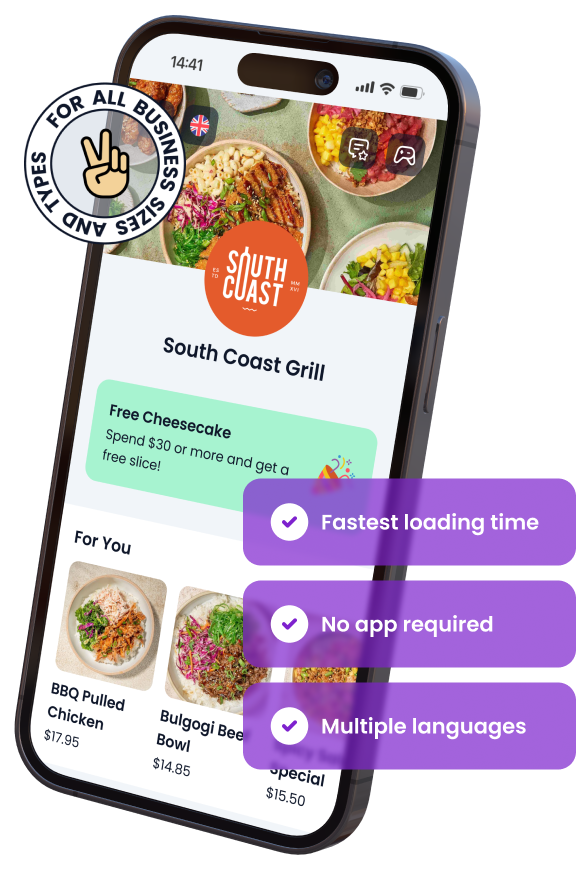
In This Article

Free AI Tools for Restaurants
TRY NOW ➜
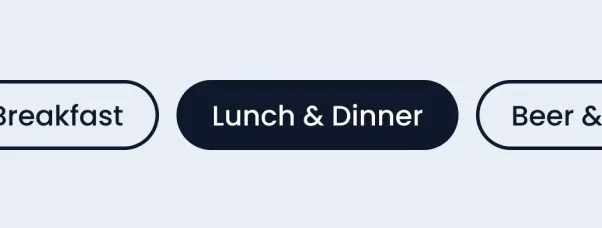
Create multiple menus for each place/branch
Offer breakfast, dinner, drinks, or seasonal menus—all easily accessible in one simple scan.


